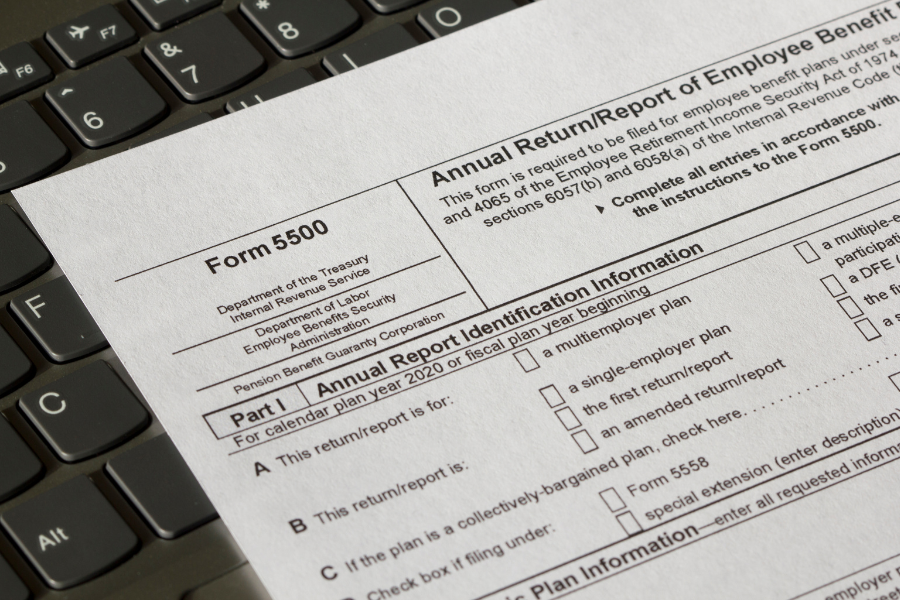Form 5500 and Your Retirement Plan

Most plan sponsors are familiar—conceptually, at least—with Form 5500. This document, required under ERISA law, provides certain mandatory disclosures about the plan to both the federal government and plan participants. Form 5500 comes in three “flavors”:
- Form 5500 EZ, used only by solo 401(k) plans that cover a business owner and their spouse (unless the plan has less than $250,000 in assets on the last day of the plan year, in which case no form is required at all);
- Form 5500 SF, which applies to smaller 401(k)s that cover fewer than 100 participants (the plan must satisfy the Department of Labor’s independent audit waiver requirements, must be 100% invested in “eligible plan assets” whose fair market value can be readily determined—e.g., mutual funds—and must contain no employer securities);
- Form 5500, covering plans with more than 100 participants.
Much like the IRS’s Form 1040, Form 5500 is not a single-form document. For plans with more than 100 participants, Form 5500 must be accompanied by various other schedules, depending upon the presence or absence of certain features and investment types in the plan.
Perhaps the most important things for a plan sponsor to understand about Form 5500 are the filing deadline and the penalties for not filing on time. Form 5500 must be filed by the last day of the seventh month following the end of the plan year. So, for plans following the calendar year, the deadline would be July 31 of each year. Employers are permitted to file for an extension to file the form; granting of the extension affords the employer an additional 2 ½ months (to October 15, for plans following the calendar year). But the extension form (Form 5558) must be filed prior to the initial due date for Form 5500.
Penalties for not filing can be steep. This is compounded by the fact that if the form is not filed, the Department of Labor may not notify the employer for a year or more after the due date. That matters, because:
- The IRS imposes a penalty of $250 per day, with a maximum of $150,000;
- The DOL penalty can go as high as $2,586 per day, indexed for inflation, with no maximum.
As you can see, it is in the employer’s best interest to coordinate with the plan provider to make sure Form 5500 is filed in a timely manner. There is, however, a way to mitigate the damage for employers who realize that their Form 5500 was not filed on time but who have not yet been notified by the DOL. The Delinquent Filer Voluntary Correction Program (DFVCP) allows the plan sponsor to file a late Form 5500 and pay a less costly, flat penalty amount. For small 401(k) plans, the maximum penalty is $750, and for large plans it is $2,000. There is also a provision for a plan sponsor to file multiple late returns at the same time, with maximum penalties for small plans capped at $1,500 and those for large plans capped at $4,000.
As far as plan participants are concerned, the most important information provided by the Form 5500 includes:
- amount of administrative fees paid from plan assets;
- distributions made to participants and their beneficiaries;
- total plan value;
- disclosure of participants’ right to request a copy of the Form 5500.
Each year, a Summary Annual Report (SAR) containing this and other information must be provided to participants. The SAR is due either nine months after the end of the plan year or two months after the due date of the Form 5500, whichever is later.
At Savant Wealth Management, we pride ourselves on offering state-of-the-art plan services to retirement plan sponsors, including timely and accurate filing of Form 5500 and other administrative and record-keeping functions required by law. Our goal is to handle the details so that the employer can focus on running the business. To learn more, visit our website to read our article, “Choosing a Plan Provider: Some Key Questions.”

